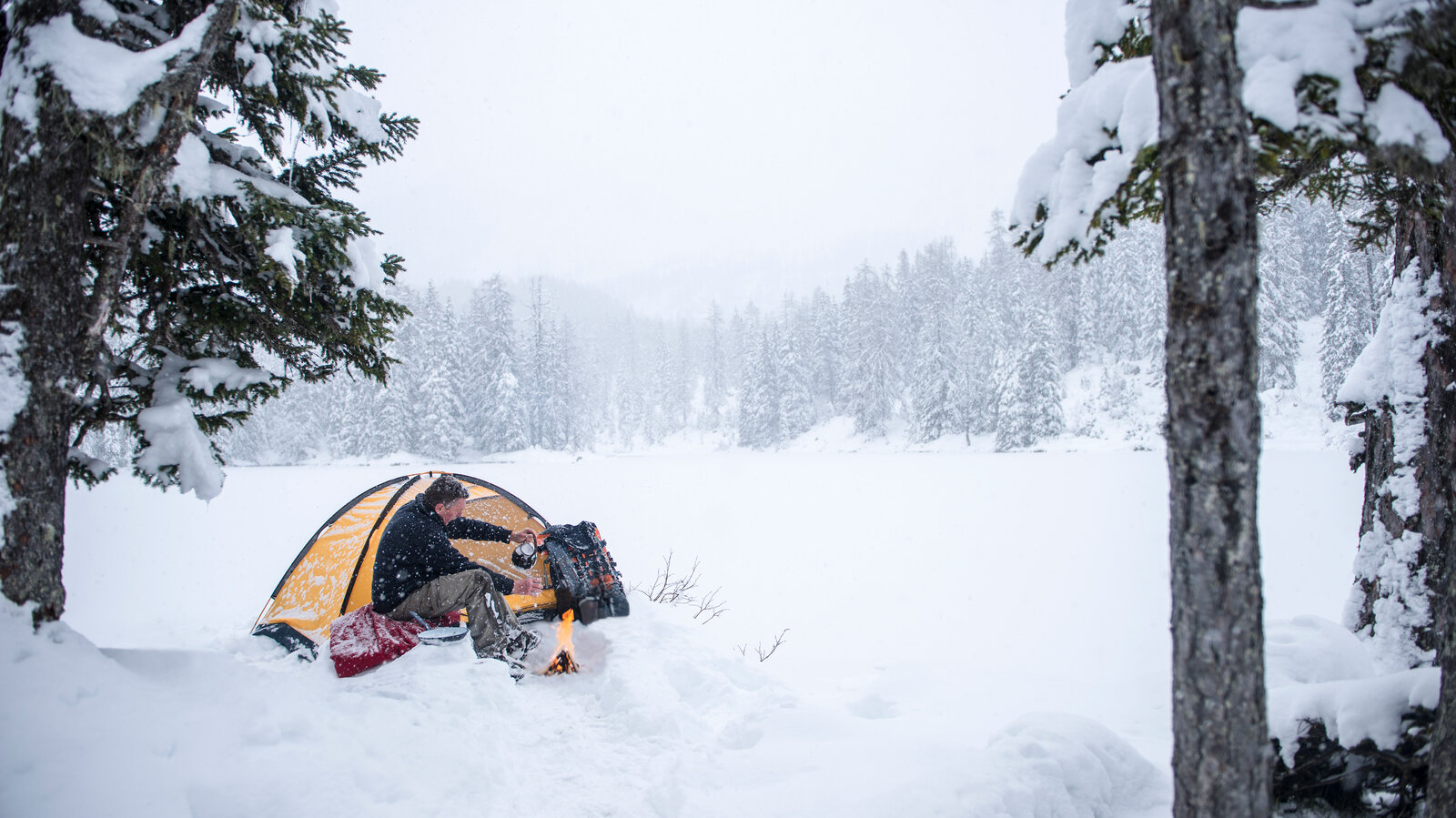Many campers who like camping in all other seasons miss out on the beauty of winter camping because they are concerned about remaining warm throughout the night. Even some experienced campers might not know how easy it can be to insulate a tent to have a warm and cozy shelter in the heart of the icy mountains.
Knowing how to insulate a tent for winter camping is one of the most crucial skills you need to master while camping in cold weather.
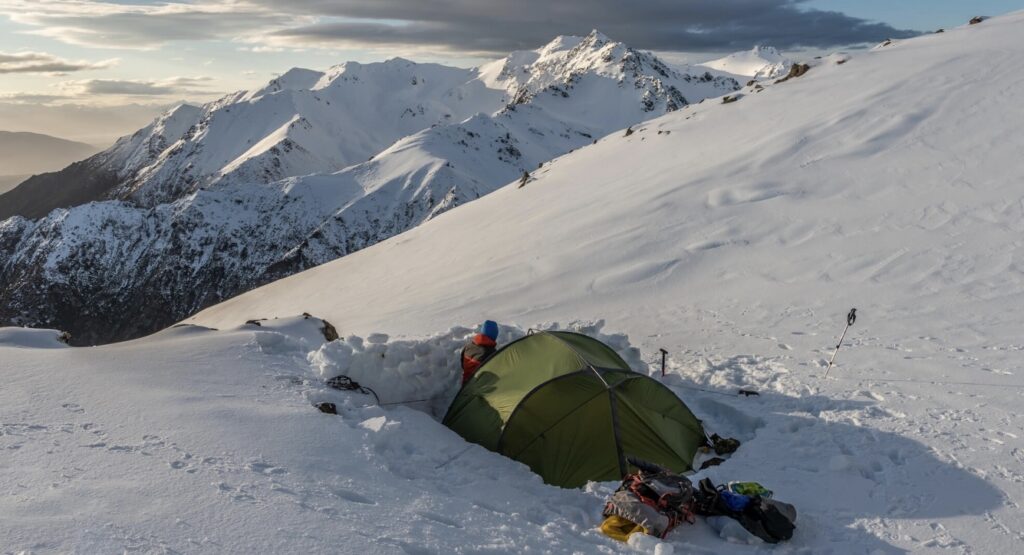
12 Reliable Steps To Insulate A Tent For Winter Camping
Camping in the winter is unlike anything else. A warm cup of coffee brewed over a campfire is the perfect way to start the day when you awake to the sight of snow and the chill of the wind on your cheeks.
The best technique to insulate a tent for winter to make it warmer is to use items that can hold heat inside and remain warm all night. It will not take much of your time and a few items of equipment that you most likely already have to insulate your tent for the winter months.
Are you looking forward to the winter adventure? If so, keep reading my basic safety guidelines on how to insulate a tent for winter camping. That will keep you warm all night in cold winter conditions.
1. Bring Small Four-Season Tent
Although bringing a good four-season tent for winter camping is not exactly about insulating your existing tent. These tents have thicker textiles on the inside tent body, making them better at protecting you from the cold weather.
For the majority of winter camping trips, a three-season tent can provide appropriate insulation; but, in really cold temperatures, only four-season tents will do.
A three-season tent canopy is primarily made of mesh, which, while excellent for breathability in the summer, won’t do much to keep you warm at night.
In order to stop cold air and snow blowing inside, most additionally include snow flaps around the base.
While winter camping, it’s frequently wise to select a smaller tent in addition to a four-season tent. A smaller tent will provide better thermal efficiency. Your body is the main heat source for your tent. Because there is less space for your body to heat up, it is simpler to keep your tent warmer with a compact shelter as opposed to a larger one.
2. Insulate The Ground Outside the Tent
Cleaning the Ground First
First of all, spend a few minutes before setting up camp leveling the snow or removing any garbage that can cause air pockets.
In addition to harming your tent, sleeping on uneven ground with garbage under it can have a direct impact on how warm you will be during the night. It is highly likely that cold air and winds will blow under your tent if its base is not flat on the ground.
Ground Insulation
After cleaning the ground is done, it is time to do ground insulation from the outside. Since this is where a lot of cold can leak in, a thick, sturdy ground cover is a crucial component of the insulating process.
For this you need to lay down two waterproof tarps, ideally one on top of the other. You will be protected from the potentially wet cold ground by these tarps. The tarps will also block the air from entering the room through the tent floor.
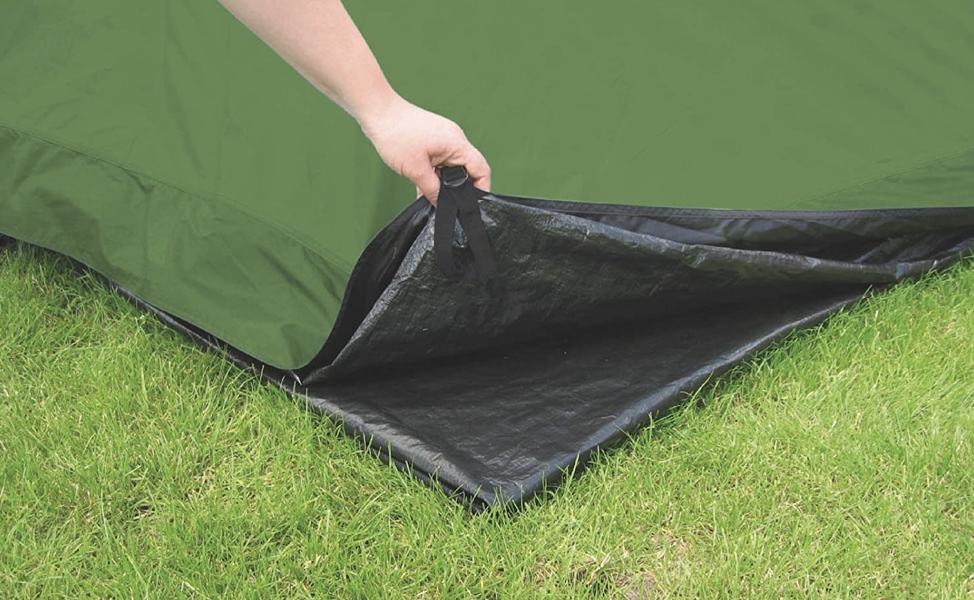
If the ground is dry, you may additionally use an extra layer of cardboard between the cold ground and the tent. The more layers there are between the ground and your tent, the warmer you will be while cold weather camping.
3. Insulate The Ground Inside the Tent
To do ground insulation from the inside of your tent you can spread out space blankets, foam padding, reflective foam, or even an extra sleeping pad.
Cover each piece of the tent floor. This not only prevents heat loss but also prevents you from getting cold feet, hands, or knees.
You should have a sleeping pad and a warm, insulated sleeping bag in addition to the ground insulation. As I mentioned before, the more layers you have between the ground and you, the more protected you will be.
Another way to insulate the ground from the inside is an emergency blanket. An emergency blanket that reflects the inside should be placed on top of your tent’s floor, which should be supported by cardboard and tarp layers outside.
As cold air goes near the bottom, the area about five inches above the ground is most vulnerable to cold drafts, so when you set up this blanket, tape the sides and corners to the tent’s walls rather than to the ground.
4. Bring a Tent Footprint as an Alternative
A tent footprint can be an alternative to a heavy duty tarp for ground insulation from the outside. A footprint simply adds a layer between you and the chilly ground to reduce the loss of body heat through the tent’s base.

When going on a winter camping trip, a footprint, also known as a groundsheet, is a little, adaptable piece of equipment that can be priceless. It is lighter than the tarp so it can be a great choice for backpackers.
To prevent moisture and chilly temperatures from entering through any openings, make sure your groundsheet is big enough to cover the whole bottom of your tent.
In order to have a clean, dry place to put your gear at night, it’s also nice to have a footprint that covers the vestibule area of your tents.
Footprint or any other covering will also prevent rips and tears from occurring at the base of your shelter.
5. Insulate the Top and Walls of Your Tent Outside
You may discover that the built-in insulation of your four-season tent is just insufficient to keep you warm in extremely cold environments. Use a thermal or emergency blanket or another type of heat-reflective material to insulate the top and walls of your tent outside and inside. This technique will help you to keep warm air inside and cold air outside of your tent.
It is better to insulate your tent from the outside around, or after the sunset. Otherwise, your shelter won’t get warm during the day while it is sunny.
Bubble wrap is another great tent insulation decision. Bubble wrap, though it may sound funny, have excellent insulating properties. Using it outside of your entire tent makes it an extra layer between you and other elements.
Insulating your tent from the outside is far simpler to complete than insulation inside. If you discover that keeping warm when winter camping just requires more than a thermal blanket covering your tent outside, think about insulating the tent walls and top inside.
6. Insulate the Top and Walls of Your Tent Inside
Although it takes the most time, this phase is also one of the most successful ones. In this case, you can use a reflective foil, a space blanket, or any other material that absorbs heat and reflects it back inside.
An insulated tent has two effects. By reflecting the warm air produced by your body and adding another layer of protection against outside temperatures, you can maximize thermal efficiency during the winter months.
Besides, don’t forget to properly lock up all of your tent’s mesh windows and screen doors before lining the top and walls of your tent with insulation. Even though it might not seem like much, zipping up the storm flaps on your tent might help reduce the amount of cold air that seeps into your sleeping area at night.
7. Use or Build Windbreak
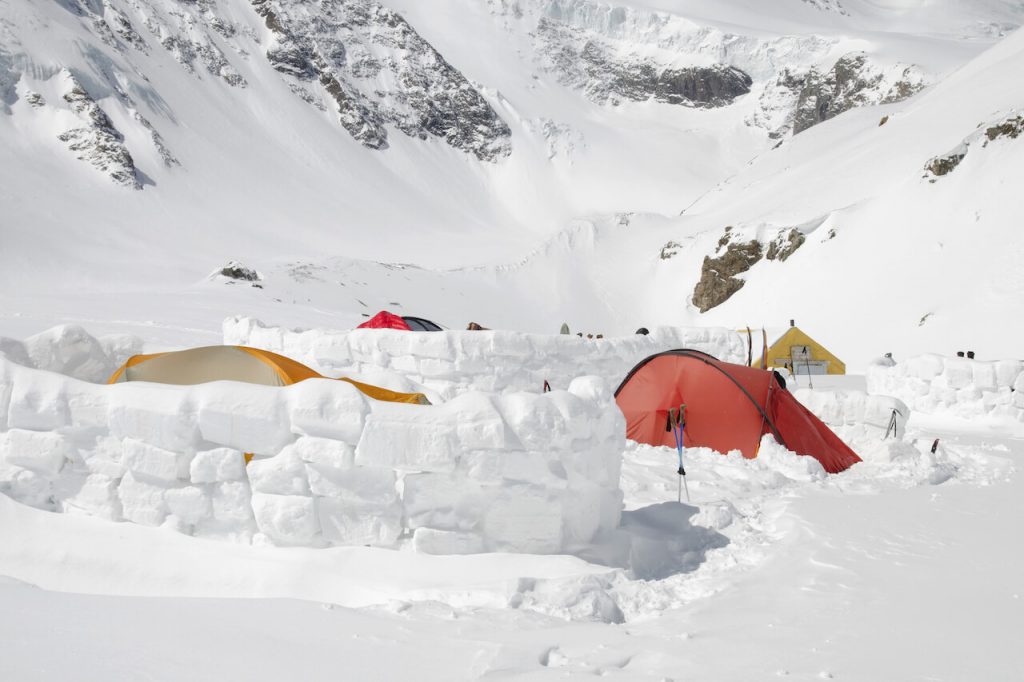
Consider pitching your tent close to a natural windbreak, such as some shrubs or a sizable rock formation. This will result in less icy winds. As an alternative, you can lean your tarp over to create a windbreak by pulling one side of it down and staking it to the ground.
A smart alternative to using a tarp as a wind break when camping in extremely snowy circumstances is to construct a substantial snow wall around your tent.
You can use snow walls to prevent drifting snow from building up on the side of your shelter at night because they are frequently stronger and more efficient than tents.
Travel upwind from your tent and construct a large wall in front of it out of the nearby snow or other items. This wall will significantly reduce wind flow and prevent heat waste.
You can check the video on How to Windproof a Snow Tent below.
8. Get a Tent Heater
This is possibly the most straightforward and efficient choice. And the simplest one.
When selecting the tent heater, you should consider numerous variables, including the size of your shelter, the number of people living in a tent, and of course the camping environment.
However, keep in mind that improper use of tent heaters might be harmful. These heaters have open flames and can get quite hot to the touch; this creates a fire risk as well as a carbon monoxide risk.
Proper Tent Heater Safety Measures are Always Required.
Avoid leaving a heater close to tent walls or any equipment that might catch fire. Additionally, you should never sleep in a room that isn’t well ventilated. These are common safety measures.
The good news is that risk can be minimized by the majority of contemporary heaters having safety features such as automated shut-offs and oxygen depletion sensors.
Even if you get a heater, do not neglect on insulating your tent for winter camping. Due to safety measures, you should not fall asleep with the heater running. Thus, if your shelter is not well-insulated, you might get cold during the night.
Finally, it’s important to note that a camping stove is not a reliable substitute for a specially designed tent heater. While camping stoves are excellent at what they do (i.e., cooking meals while camping), they lack the several safety features that tent heaters have.
Using a camping stove instead of a heater may result in suffering a serious sickness or injury.
Want to learn more about types of tent heaters? Please read about it in my article about Great Ways To Heat Tent In Winter.
9. Insulate Yourself
While insulating your tent, you should not forget about yourself. Your body is the main source of warmth. So dressing in layers is the key to staying warm during a winter camping trip.
A significant component of that is thermal underwear, which is likely the best purchase you will ever make.
They are of different sizes and different colors. They are affordable as well. Simply get a set one size larger if you would like something a little less constricting.
Another great idea before hitting the trails is to wear thermal socks. Always bring an extra pair or two of socks to keep your feet dry because cold, damp feet are one of the main causes of discomfort, illness, and even frostbite.
10. Get Well Insulated Sleeping Bag
During a winter camping trip, a cozy warm sleeping bag is the dream. No matter the weather outside, you may still enjoy a good night’s sleep if you have the right sleeping bag.
Mummy sleeping bags are the finest sort of sleeping bags that can keep you warm even in temperatures as low as 0°F.
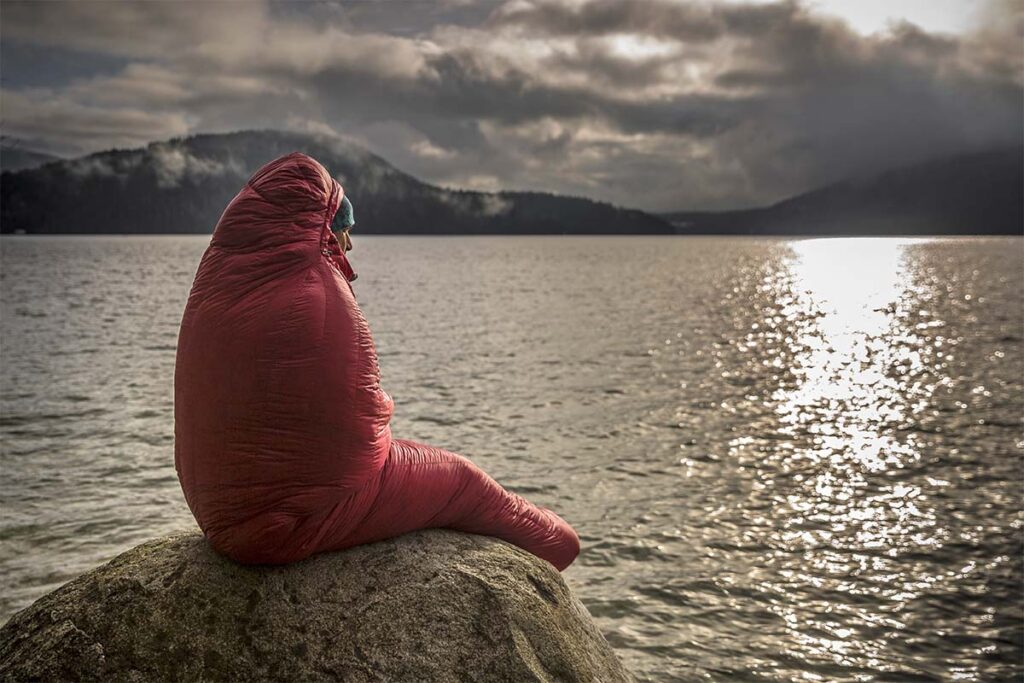
A mummy bag’s form-fitting design improves its insulation properties by limiting the quantity of air surrounding the body, which requires less heat to maintain a steady temperature.
11. Make Sure Your Head is Covered
You should remember that the top of our heads are where we lose the majority of our body heat. A knit hat or balaclava will keep you warm. Additionally, it keeps your ears warm, which has been shown to improve sleep.
Then wrap up in a mummy sleeping bag, and never worry about your body heat.
12. Natural Materials Insulation
What if you don’t have any synthetic materials to insulate your tent? That’s not a problem. There are still things you may use from your surroundings to stay warm.
For instance, layers of dead leaves can provide insulation between you and the ground. Use only dry leaves as a natural insulator; wet leaves would make the environment colder and more uncomfortable.
The leaves can be piled underneath your tent to serve as a layer between you and the ground while you sleep.
Summary
For some winter camping might sound frightening since no one wants to spend the night freezing. Now you are prepared for your upcoming winter camping trips because you know how to insulate a tent for winter camping.
In the article, I described plenty of ways how to stay warm in a tent in the middle of a snowy winter, and still feel cozy.
Your Turn
I would be happy to learn about any strategies you have used to stay warm during the coldest camping experiences!
Please feel free to post your comments in the space below and share your tips and tricks.

My name is Olivia Kellison. I have been camping with friends and on my own for a long time. For me, camping is a great way to escape everyday life’s chaos. I started this blog because I have always had a passion for the great outdoors, and here I am gladly sharing what I know with other outdoor enthusiasts. It does not matter whether you are an experienced adventurer, or just planning your first trip, my blog will be of great help to you.

